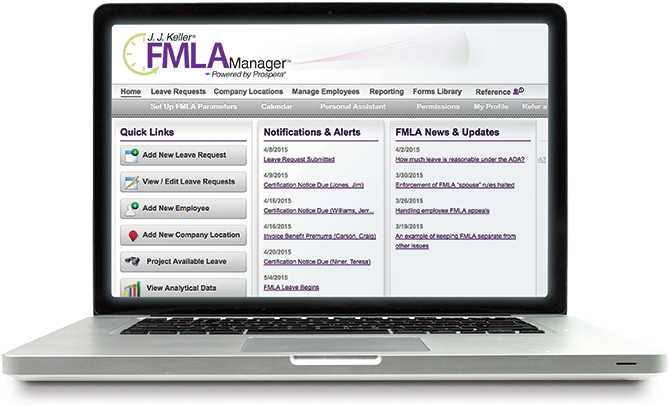FMLA Articles
Federal Ways and Means Committee advances paid leave plan
Key to remember: Interest in paid leave continues to grow. A Congressional proposal would provide for 12 weeks of universal paid leave.
Applies to: All employers.
Impact to customers: Employers would need to prepare for potentially more employee absences if this proposal were to become law. They would not have the same level of interaction as they do with the FMLA, because employees would apply for benefits from the government.
This month, the federal Ways and Means Committee finished marking up its proposal to invest in universal paid family and medical leave as part of the Build Back Better Act. If successful, it would be effective July 2023.
Under the proposal, employees could take up to 12 weeks of paid parental, serious medical condition, or caregiving leave. Some of the details are as follows:
- The paid leave would be run through the Social Security Act, governed by the Treasury.
- The provisions would apply to all public and private sector employers, unlike the FMLA which applies to all public employers and private employers with 50 or more employees.
- All U.S. employees could apply for up to 12 weeks of universal paid family and medical leave, including full-time, part-time, and independent contractors. Employers with fewer than 50 workers could be eligible for assistance grants.
- Employees could take up to 12 weeks of paid leave for qualifying reasons in a 52-week period, but they need to have at least four hours of caregiving in a week.
- Employees would need to have earned wages or be self-employed at least four months before leave is to begin.
- The reasons would be similar to those of the current FMLA, but expanded to include the death of a spouse, parent, or child (employees could take three of their regular workdays for bereavement).
- Family members would include a spouse (including a domestic partner in a civil union or other registered domestic partnership recognized by a state) and a spouse’s parent; a child and a child’s spouse; a parent and a parent’s spouse; a sibling and a sibling’s spouse; a grandparent, a grandchild, or a spouse of a grandparent or grandchild; and any other individual who is related by blood or affinity and whose association with the employee is equivalent of a family relationship.
- Employees would receive from 5 to 85 percent of their average weekly earnings, based on their pay. The higher the pay, the lower the paid leave percentage.
- Employers that provide the same or richer benefits could seek reimbursement as long as the company plan met certain requirements.
- The application for the leave would include information that certifications similar to the current FMLA certifications may be involved.
- The Treasury would determine if the leave qualifies for benefits.
While such a program would require employers to make some changes, it is currently just a proposal. No need to start rewriting your policies, but it does warrant watching. This is not the only outlet for paid leave Congress has considered. In August, universal paid leave was included in the $3.5 trillion FY2022 budget resolution.
This article was written by Darlene M. Clabault, SHRM-CP, PHR, CLMS, of J. J. Keller & Associates, Inc. The content of these news items, in whole or in part, MAY NOT be copied into any other uses without consulting the originator of the content.
You may also enjoy the following articles:

The J. J. Keller FMLA Manager service is your business resource for tracking employee leave and ensuring compliance with the latest Federal and State FMLA requirements.